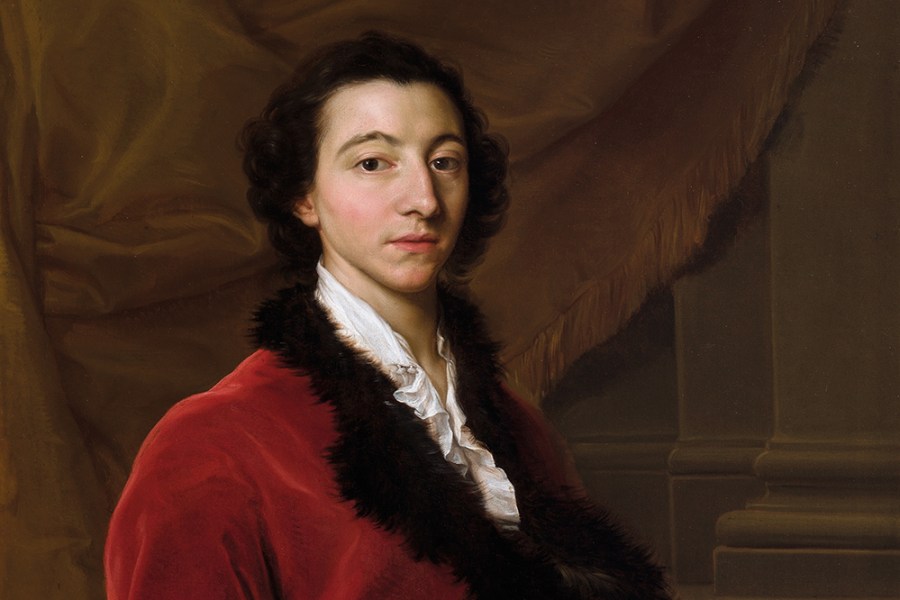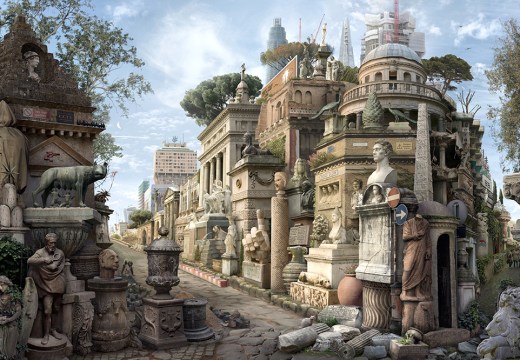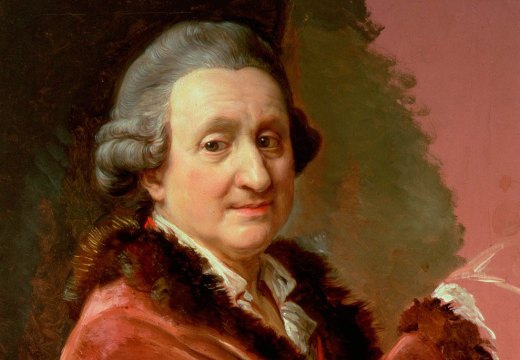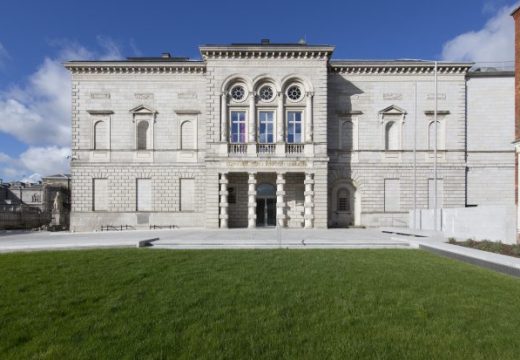From the February 2023 issue of Apollo. Preview and subscribe here.
In July 1914 Bennett & Son, a Dublin firm of valuers, was commissioned by the 7th Earl of Wicklow to compile an inventory of the contents of Shelton Abbey, his family home in County Wicklow. Among the items listed in this document is a painting by the leading Roman portraitist Pompeo Batoni of the earl’s forebear Ralph Howard, made while the latter was on his Grand Tour in 1751–52 and listed in 1914 as being worth £210. A few decades later, in October 1950, the eighth earl, having tried without success to run the house as a hotel, sold the contents of Shelton Abbey in a 13-day auction. The same picture appeared as one of the lots, now simply listed as a ‘three-quarter length portrait of a gentleman in crimson with fur-edged coat’.
Shelton Abbey features in a new book on Irish house inventories during what is known as the long 18th century: the inventory of the building’s furniture here was made for the 3rd Earl of Wicklow in 1816. For unknown reasons, Shelton Abbey’s picture collection was not included, which means we do not know what value was placed then on the Batoni portrait.
Omissions of this kind hint at both the fascination and the fallibility of all inventories. When it comes to country house contents, they provide us with a great deal of information, but rarely all of it. Among the various examples offered in the present work, some include valuations, others do not, some feature the contents of libraries, most omit them – in fact, as Toby Barnard notes in his foreword, two of the three libraries listed here belonged to bishops, supporting the contention that ‘members of the Irish peerage and country gentry were not notably bookish’.
They were, on the other hand, very keen that their homes reflected the latest taste, and across the span of some 120 years and 18 inventories it is possible to see how the decoration and design of affluent Irish households changed. In Life in the Country House in Georgian Ireland (2016), Patricia McCarthy noted the ubiquity of the term ‘parlour’ to describe a wide variety of rooms, at least until the mid 18th century, reflecting the fact that these spaces were used for diverse purposes. Even the grandest of houses had parlours, as was the case with the Bishop of Elphin’s palace in Elphin, County Roscommon: an inventory of its contents made in June 1740 refers to a parlour where a copy of Ephraim Cham- bers’ Cyclopaedia (first published 1728) was kept ‘for the instruction and amusement of country gentry and parsons’.
However, as the century progressed, rooms were given more specific designations. Two inventories from Hillsborough Castle, County Down, are included here, one dated 1746, the other 1777, although both were made for the same owner, Wills Hill, who had inherited the title Viscount Hillsborough in 1742 before being created Earl of Hillsborough in 1751. Rebecca Campion points out in her preamble that while the first inventory featured the contents of a drawing room, a hall and both large and little parlours, the second inventory, of a new house built by Lord Hillsborough, had no parlours but as well as a drawing room and ‘great hall’ contained a breakfast room, dining room and library.
Not only were these different spaces renamed, but the way in which they were decorated was refashioned. Among the most significant changes from the second quarter of the 18th century onwards was the increased quantity of mahogany furniture. An inventory of Kilrush House, County Kilkenny, compiled for Major-General Richard St George in 1750, shows that the most valuable item in the hall was a ‘Mohogney Oval table’ worth £4 11s. 6d. Kilrush was an extended late medieval tower house, with roughly plastered stone walls, which explains the presence of tapestries – good for covering large spaces and excluding draughts – when they had long fallen out of favour in more recently built properties. An inventory of Kilkenny Castle made for the second Duke of Ormond in 1705 shows tapestries were hung in many of the rooms: three in ‘His Grace’s Bedchamber’, for example, and four in the Drawing Room, these ‘10 feet deep’ and depicting the story of Diogenes. The great dining room, meanwhile, was ‘compleatly hung wth: gilt Leather’, another material soon to disappear from fashionable homes.
Regrettably, inventories don’t tell us the origin of many items: were they of Irish manufacture or brought from abroad? Some goods were obviously imported, not least much of the blue-and-white china found almost every- where (although there were several periods when delftware was produced in Ireland). Repeated efforts were made, sometimes by lords lieutenant like the Duke of Dorset in the 1750s, to encourage domestic production and consumption of household goods. Likewise, in 1764 a number of painters and sculptors came together to found the Society of Artists in Ireland, with the intention of holding regular exhibitions of members’ work. But Irish household inventories paid no more attention to Irish-made art than to crockery.
Thus, in 1772 a room called the Street Parlour in the late Luke Gardiner’s house on Henrietta Street, Dublin, was hung with several paintings including ‘1 Large History piece’ and ‘2 Sea pieces over the doors’. Alas, no further detail is provided. In an inventory compiled in 1818 at Carton House, County Kildare, principal seat of the Dukes of Leinster, the degree of detail can be tantalisingly insufficient. The building was undergoing extensive remodelling, which perhaps explains why Room No. 4 in the attic storey was ‘Full of paintings And Prints’; but even pictures on display merit scant detail: those in Bedroom No. 13 are recorded as ‘5 Portraits, Gilt frames, Glazed’. Perhaps one should not be too surprised that when Ralph Howard’s portrait was sold in the Shelton Abbey auction of 1950, nobody seemed to realise that the work had been painted by Batoni. Its contents long scattered, the house, by the way, is now an open prison.
From the February 2023 issue of Apollo. Preview and subscribe here.
Unlimited access from just $16 every 3 months
Subscribe to get unlimited and exclusive access to the top art stories, interviews and exhibition reviews.














![Masterpiece [Re]discovery 2022. Photo: Ben Fisher Photography, courtesy of Masterpiece London](http://www.apollo-magazine.com/wp-content/uploads/2022/07/MPL2022_4263.jpg)
It’s time for the government of London to return to its rightful home